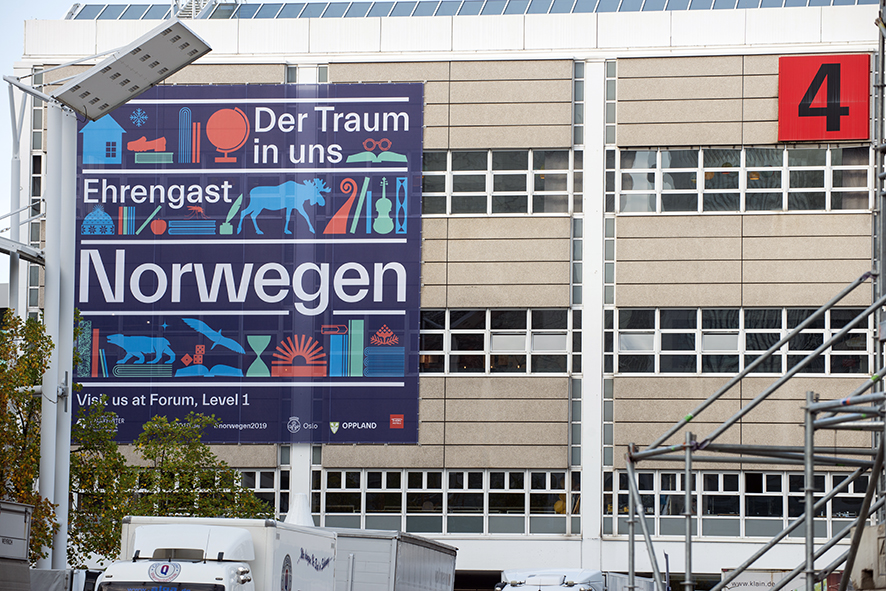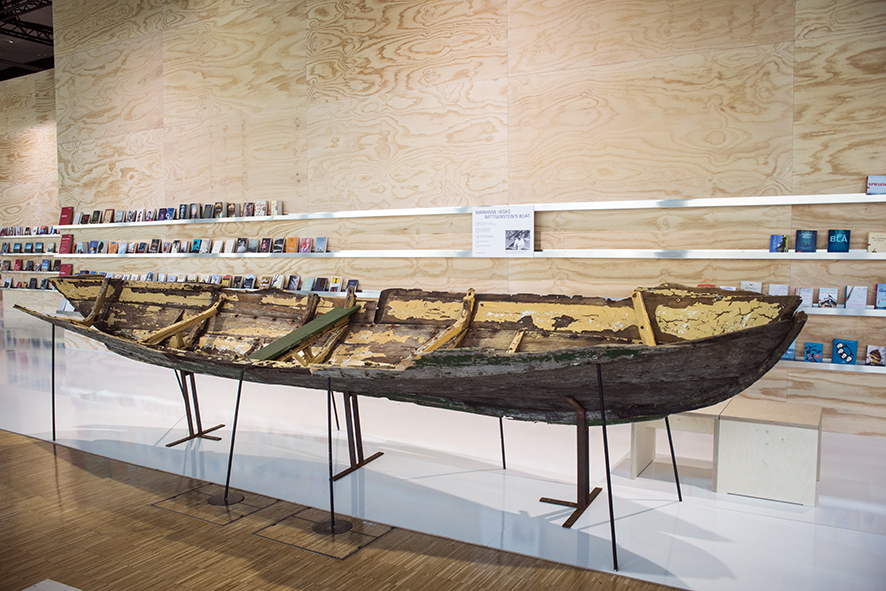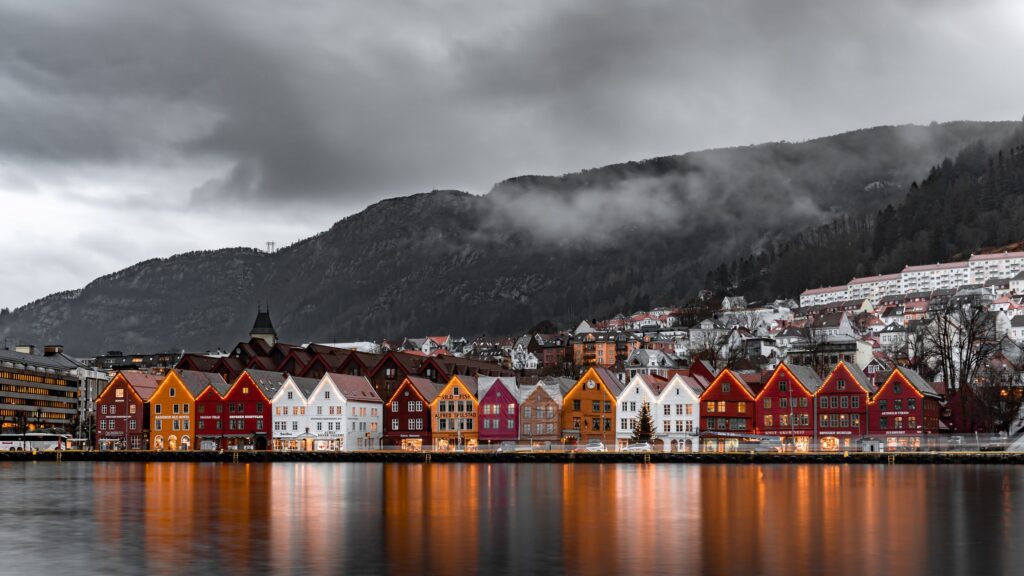Report after glowing report about small presses doing brilliant things for translated Scandinavian literature are – in essence – correct, but I think we need to talk about money!
A recently published piece on the Norwegian Arts platform titled ‘Thinking Independently: How Britain’s Small Presses Championed Norwegian Literature’ by Johanne Elster Hanson got me thinking.

This buzzy article focuses on the role of independent presses in bringing Norwegian literature to the UK. It highlights Fitzcarraldo Editions, MacLehose Press, Verso Books, Orenda Books and Nordisk Books – a fairly decent, representative spread of the current translated literature scene. The biggest and catchiest quotes in the piece are from Duncan Lewis (founder of Nordisk) and Karen Sullivan (founder of Orenda) which is probably understandable given that both are personal founders of small presses who are still involved in day-to-day operations. They’re compelling individuals who have done plenty for Nordic literature in translation (you might say that Orenda is at the slightly crimier end of the spectrum, and Nordisk is at the more highbrow end, but they both publish what are – without a shadow of a doubt – good books!).
The Norwegian Arts article covers the recent boom in Norwegian translations in Britain rather neatly – and I agree with its central premise that this boom is indeed happening. More or less anyone working in and around the publishing industry, and avid readers alike, will have been unable to miss the recent surge. (Indeed, only 3 or 4 years ago there was a full-size billboard with the face of Karl Ove Knausgård on it on Leith Walk here in Edinburgh). Translator colleagues who usually work out of Swedish and Danish have flocked to Norwegian in the last few years (even I’ve dabbled in some sample work), and it’s clear that demand is booming.
A sense of deja vu
However, the piece also got me thinking about how its definitive rhetoric seemed familiar – ‘it’s the indies wot done it’ – and how my own response was one of deja vu. It brought to mind a piece by Chad Post on Three Percent that appeared a year ago which was the result of his (NORLA-funded) visit to Lillehammer. Quite rightly, Post came away impressed (okay, I dare anyone to be unimpressed after they’ve been invited on a sponsored visit that dovetails with their interests! Me included in other contexts…). Writing in summer 2019, Post said ‘We’re about to enter a five year period in which Norwegian literature is very trendy—especially when written by women. And when it’s unusual. Goodbye, Knausgaard and Petterson. There are new voices that are going to resonate.’ Reading this while stuck on the train to London, I was inspired to reply in a Twitter thread.
This piece by @chadwpost reflecting on a selection of the statistical publication data in the Three Percent database relating to Nordic-English fiction/poetry translations in the USA is really worthwhile. A thread: [1/15]https://t.co/NEjZPla1Q5
— Ian Giles (@ioagiles) July 2, 2019
Frankfurt? Never heard of it…
(Content warning: if you find lengthy discussion about German book fairs and marketing strategy distressing, I give you permission to skip ahead!) I was delighted to see some decent statistical analysis on Nordic-English translation, but my gut reaction was that I disagreed with some of Post’s central conclusions. In the case of Norwegian-English, I felt the reasoning didn’t quite add up when it came to his allusion to healthy publication figures in 2018 followed by his statement that Norway’s Guest of Honour status at Frankfurt Book Fair 2019 would see these figures go through the roof. (In fact, we had evidence to show that Norwegian was the fastest growing Nordic language in English translation at the time). This seemed unlikely to my mind. The figures had already gone through the roof and then some by the middle of 2019. This was hardly a surprise given the extraordinary efforts and funding being thrown at marketing Norwegian literature abroad in the build up to Norway’s big outing to Frankfurt 2019 – including almost limitless translation funding that was far more generous than usual (both in terms of the sums granted and the number of beneficiary titles).

Of course, if there is to be a big boom post-Frankfurt, there has to be a pretty big boom in the year of Frankfurt. And if you’re to achieve that, you need a few good years beforehand too. Norway did this and then some. The reason for my feeling that Norwegian had peaked by 2019 was straightforward: it is easier to sell Norwegian titles to other languages if they’re available in English first. 2019 and 2020 may well be tremendous years for the publication of Norwegian literature in German, or Greek, or Georgian – but in many cases I suspect this is the result of the availability of titles in English already.
In short, Norwegian had had its Frankfurt bounce before Frankfurt took place. Looking to the easy comparisons that could be made – Iceland was Frankfurt Guest of Honour in 2011 and Finland had a go in 2014 – both Nordic benchmarks recorded their bounce in English translation post-Frankfurt over the course of two or so years. Last year marked 5 years since Finland’s spot in 2014. While data showed a significant uptick in literary exports, and FILI professed themselves ‘happy’ with the legacy, there was also a sense that more could have happened in the bounce. I’ve every certainty that the Norwegians will have done better given NORLA’s enormous financial commitment and strategic approach. But looking at the English-language situation in particular, we don’t yet know what this situation is. This data takes time to come through, and it may be that I’m yet proven wrong. My initial feeling that sales to other languages are booming post-Frankfurt is borne out by NORLA statistics for sales of foreign rights in 2020. You can read NORLA’s report on its Frankfurt outing here.

So where does this leave us? Well, in terms of publications and sales, we’re in the dark about the impact of Frankfurt 2019 for the time being. As I previously mentioned, it takes time for updates to percolate. We are still waiting for more data from Literature Across Frontiers, there has been no further analysis of data from Chad Post since last summer, and where we ordinarily receive some data crunching from Nielsen BookScan in the UK in around March, Covid seems to have put paid to that. (As yet no puff pieces are out there on how sales went in 2019 – and as I don’t have £30k for a Nielsen subscription I can’t check for you). It’d be good to be brought up to speed (and I hope someone else is able to!). Indeed, the initial signs are that the pandemic has not decimated the publishing industry, and NORLA’s Covid guarantee of 50% funding for all applicants for translation support in 2020 may yet skew the figures upwards – despite my arguments above.
Independent publishers – who and now?
Anyway, back to the recent Norwegian Arts article (about time? Am I right?). I was taken aback at its failure to mention Frankfurt 2019 once! This was the biggest marketing push in Norwegian literary history, yet it received no mention whatsoever. Similarly, the role of NORLA was glossed over. In fact, the suggestion that independent presses publishing Norwegian literature in the UK was a new concept didn’t sit comfortably with me either.

I am somewhat puzzled by the selection of publishers – MacLehose Press (owned by multinational Hachette) is hardly an independent publisher (albeit one that is ‘independently minded’). (Not to mention the oddity of describing Knausgård as a mainstream bestseller, when in reality his entrance into English came via Archipelago – itself a small indie press in New York). It set me wondering about other names that you might expect to encounter including Bloodaxe Books, Head of Zeus and Norvik Press (to name but three).
The history of Norvik Press (founded by the late, great scholar and translator of Norwegian James McFarlane and the similarly inimitable Janet Garton) is hardly any less personal or compelling than that of, say, Nordisk or Orenda. As a small press (with frankly limited means), Norvik has always published a wide range of interesting writing (including Vigdis Hjorth, with a colourful profile feature appearing on Norwegian Arts) while relying on external support – of which it has made no secret. Karen Sullivan suggests that other (bigger?) publishers need to ‘create vast amounts of profit’ – which seems unlikely to happen with most translations. (Translations are generally expensive to publish). And notwithstanding the mega publishers out there, it’s surely always been the case that most publishers hope to make a profit at all, rather than ‘vast amounts’.
This certainly can’t be true of a non-profit like Norvik. (If anything, surely their motives are even more noble? So why no mention in the article?)

Looking back, Norvik is no isolated exception in the longstanding role of independents in importing Norwegian literature to the UK. The small and respectable press Barrie & Rockliff published Agnar Mykle in the 1960s (the best selling Norwegian in English until Jo Nesbø came along), while Jostein Gaarder (Sophie’s World) appeared in publication in a rarely heard-from imprint of Orion. Looking back a century, even Knut Hamsun’s stuttering entrance to the British market was via independents, and eventually, through self-publishing.
Duncan Lewis (Nordisk founder) remarks in the article above: ‘Picking your own titles is one of the benefits of running a small press, one that has helped make the UK book market varied and diverse’. While I’ve no doubt this is true (Nordisk is a one-man band), it does seem somewhat redundant to state that a publisher gets to pick what they publish, and even that the huge UK publishing scene is diverse. I’m not sure the current status is anything new (above I’ve mentioned a grand literary master, a literary smut peddler, a philosophical weirdo and an ex-footballer turned crime writer) – as a rule, we only translate works into English where there is a perceived need for those additional voices. By definition, I’d argue, translations are always diverse and diversify the publishing scene.
So what’s this boom really about?
All of this begs the question – if indie presses have always been around and diversity is old hat, what has actually changed? What is this month’s Norwegian Arts article about? Well, the answer is easy – state funding! There are certainly more books being translated from Norwegian to English now than before (even compared with a decade ago). This is quite simply the result of generous translation support from NORLA, the state-funded agency supporting Norwegian literature abroad. Sullivan (Orenda) speculates that translation has become ‘an art form’ in the present day, and I’d agree the profession is in rude health. But what has also changed is the ease with which smaller presses can afford to pay for translations. Indeed, in her excellent thesis on Danish literature in the UK (2019), Dr Ellen Kythor notes that small publishers (like Nordisk Books) quickly learn the rules of the game (no matter how disruptive they want to be) and work out how to survive and thrive (clue: state funding). This is no crime of course – it’s to be applauded (and speaking of ‘no crime’, the primary reason that these newer presses avoid crime (other than snobbery) is that crime fiction is rarely funded by state agencies). But source market-driven translation isn’t quite the same thing as demand-driven translation.

Of course, there are other elements in the mix. Naturally, the article comments on Nordic Noir (as do a couple of the people quoted) as having helped pave the way. While this is a common refrain (and one I’ve often used too), it’s worth noting that this is also where Norway scores its biggest hits in the UK. The two best selling translations in the UK in 2018 (from any language) were both by Jo Nesbø. As has become tradition, (Dane) Peter Høeg’s Miss Smilla is mentioned in the piece as a turning point. I argue in my PhD that it is not the turning point people think it is (in short: it’s an example of literary hybridity, rather than a pioneer of crime fiction or Nordic Noir). However, interest lies in its publishing trajectory. It’s probably one of the final examples of a major Nordic title in English translation that was sold abroad by an individual publisher (Merete Ries at Rosinante) rather than via professional literary agents.
Professionalisation – and how money talks
In the Nordic context, the vanguard for the professionalisation of the rights industry has been led by the agents in Sweden, who have now been up and running with commercial vigour for more than two decades. Norway and Denmark are playing catch up, and the recent flurry of newish Norwegian literary agents marketing foreign rights is a natural development, especially given Norway’s status at Frankfurt 2019. Super Swede agent Niclas Salomonsson told Norwegian paper VG a few years ago that he was ‘sick of Donald Duck agents’ and predicted 80 percent of new Norwegian agents would go out of business in 2017 alone. They didn’t. Donald Duck or not, there’s no denying that if you actually put time, effort and money into selling your books to foreign buyers, then more people will buy those rights. Offering nice sweeteners like NORLA funding for translation support and promotional book tours certainly does no harm. (This professionalisation of the rights industry is something that is begging for a PhD or two to be done – Karl Berglund and Elisabeth Böker touch on this in their respective works with Swedish and German approaches respectively, there’s still room for an examination of the anglophone situation). Sticking to the theme of professionalisation, I don’t buy into Sullivan’s assertion that translations were all ‘literal’ back in the day (in contrast to magnificent works of art today). But it’s certainly true that the professionalisation of Scandinavian literary translation has changed the face of the industry – taking it from a hobbyist occupation for enthusiastic scholars of means just a few decades ago to an industrialised assembly line in the space of just a generation.

Another (apparently unmentionable) topic is that of lower costs – and here several of the publishers quoted in the article touch on the subject. However, this change is neatly summarised by Kythor in her thesis: ‘The small publishers relying on symbolic capital to ensure their status as highly-regarded publishers of ‘literary’ literature are now more able to eschew economic capital (high sales figures, for instance) owing to technological developments. Small publishers today have much lower overheads than a couple of decades ago, owing to the advance of new technologies and media, perhaps thereby making it even easier for them to stay afloat. Newcomer Nordisk Books proves the case: in 2016, Lewis was cheaply and quickly able to establish a new publishing company, instantly launching a website, using software to typeset his first book himself, commissioning short-run specialist printers (and print-on-demand as an option), and primarily using online social media for promotion’. The use of print-on-demand and the ease of access to techy tools that weren’t available in the past has been embraced by new and old alike. Norvik Press (a pioneer of easy-to-use desktop publishing in the mid 1980s) has now come full circle and is a print-on-demand operation, and Nordisk has been joined in London by even newer kids on the Scandinavian block Lolli Editions.
So how exactly does Norway sell its literature abroad?
More generally, I wish that this month’s Norwegian Arts puff piece had acknowledged the role played by NORLA’s excellent support in promoting the translation of Norwegian literature abroad, and the importance of MONEY. We generally accept that translators should be paid for their work, and it’s no secret that sourcing the money to pay the translator is expensive for most publishers – big or small. Norwegian literature isn’t enjoying a UK boom simply based on literary merit or small publisher ingenuity – and it’s disingenuous to suggest otherwise! It is benefiting from lower costs, greater funding and the cultural zeitgeist giving it a leg up along the way. There’s no shame in admitting that. And that’s before we even consider the promotional boost that Norway gets from its Nordic neighbours (and vice versa) – and the role played by borealism (aka love of the ‘hygge’ North) in appealing to British readers.
To riff on the quote above, Norway has simply got better at playing the game of selling literature into English translation – learning from its neighbours and competitors along the way, helped by offering impactful funding too. And it just so happens that part of playing that game is persuading people to write enigmatic pieces like those by Post and Hanson…

